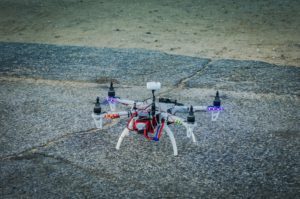While the commercial drone industry seems poised for takeoff, drone manufacturers across the globe are struggling to launch. Investors and consumers are worried about their money as several companies miss launch date after newly revised launch date for widely hyped new drones – proving that drone manufacturing may be a challenge for businesses of any size.
The drone manufacturing problem is far-reaching. Funding seems almost irrelevant: the famously failed Kickstarter-funded Zano drone; the Lily drone, with hefty venture capital and pre-order investment; and the GoPro Karma from an existing camera manufacturer have all failed to launch on time. Even established manufacturers like CA-based 3DR can struggle to get the right product on the shelves at the right time – and at the right price.
Perhaps the most infamous example of a failed drone is the now defunct Zano, the brainchild of Welsh start-up Torquing Group. The Zano was (supposedly) a drone that could be controlled remotely by following the motion of your smartphone. It featured obstacle avoidance. It took awesome selfies.
With a major investor and a very slick – but fake – promotional video, Torquing started a Kickstarter campaign: one that has since changed the way that Kickstarter vets new projects. Promising investors on the Kickstarter page that their “supply chain is 100% ready to go, from vital components that make Zano fly, to the very boxes that Zano is packaged in,” Torquing raised about $3.5 million, collecting over 3,000 pre-orders for the drone, to be delivered in June of 2015.
June went by, as did July and August; in September the company delivered about 600 pre-ordered drones. But they were far from the fantasy pictured in the advertising – the Zanos delivered were total lemons, barely able to fly. In October, Torquing promised working drones by February 2016. In March of 2016, the company announced that they were closing their doors – the $3.5 million gone and an additional $1.3 million racked up in debt, resulting in allegations of fraud and investigations from Kickstarter and the UK government. While consumers say they were scammed, Torquing says it was just bad luck – that manufacturing was more difficult than anticipated.
Check out the cool promo video on the website of Lily Robotics, and you might very well be ready to slap down some money for the cute and amazing “throw and go” follow-me drone. The video shows a drone following extreme sports athletes and landing adorably in hand like a trained pet. The video has almost 10 million views on YouTube – and has garnered the San Francisco based startup over $15 million in VC funding and $34 million in pre-orders.
If only the cute little drone existed. Forbes magazine reports: “Kelly Coyne, Lily’s head of communications, said that while the video was made without computer-generated imagery, it did take multiple attempts to shoot with a demo device featuring temporary, off-the-shelf parts that weren’t viable for a consumer product. The company, however, is well on its way to building viable product out of custom part and with a stable software code base, she added, so that ”customers can recreate that exact video” without hiccups.”
Having started selling the drone in May of 2014, the company has missed date after date to deliver on their promises. They announced in July that their previously vague “Summer of 2016” was not going to happen – they now say that “Winter of 2016” is the new date. By this time, with consumers getting nervous, they have developers posting daily updates of their progress to assure investors that a product is really in the works.
It isn’t only startups who can’t get a drone to fly. Action-camera company GoPro announced that they would enter the drone market in May of 2015. Having collaborated with drone giant DJI to provide drone cameras, it seemed a very natural extension to an existing manufacturing infrastructure, and was greeted with enthusiasm from consumers and investors. But the GoPro Karma has proved elusive.
Originally scheduled to be released at the beginning of this year, the release date has now been pushed back until winter of 2016; which is the same timeframe as the delayed release of their much-anticipated new camera, the Hero 5. While GoPro may have thought that with action cameras they were most of the way there towards the best action shot drone on the market, drone manufacturing seems to be harder than anticipated.
“UAVs are far more complex than any camera and require not only hardware, but also proprietary software. Both DJI and 3D Robotics began by developing software autopilots before attempting to build full consumer products,” says an article in Forbes magazine.
Even after getting manufacturing established, companies struggle with getting a complex product on the shelf at a price competitive with the Chinese manufacturing giants – DJI, and smaller drone manufacturer Yuneec. California-based 3DR has moved their manufacturing operations 3 times now, from the US to Mexico and finally to China, in an effort to compete. After layoffs and restructuring, the company now says that it is shifting from consumer drones to the commercial space, by offering new analytics and operational platforms.
“Drones are hard,” 3DR’s CEO Chris Anderson told Forbes. “They’re unlike a camera where you can buy sensors on the streets of Shenzhen and put something together. It’s really, really hard to do well and you can’t just buy the parts.”
Source link
